Nine Innings: The Rays Are Building a Contender, Edwin Díaz's Historic Run, and Fixing Roster Expansion

DON'T LOOK NOW, BUT THE RAYS HAVE PLENTY OF REASONS FOR HOPE IN 2019
By Tom Verducci
One of the first conversations the Tampa Bay Rays staff had with pitcher Tyler Glasnow after obtaining him from Pittsburgh in the Chris Archer trade July 31 involved asking him, “What was the approach they wanted in Pittsburgh?”
Replied Glasnow, “Down and away, down and away. They emphasized getting the ball down and away.”
“Forget it,” manager Kevin Cash told him. “Just aim for the white of the plate here.”
Glasnow, 25, 6' 8" with a power arm, always had trouble commanding the baseball. The way the Rays saw it, asking Glasnow to be pinpoint was a waste of time. His fastball/curveball combination is so good, they figured, he shouldn’t worry about spotting up his pitches, a skill that’s not in his toolbox anyway. The guy has the best perceived velocity in baseball, because of his actual velocity and the length of his stride and reach.
“We aim down the middle,” Cash said. “If you watch catcher [Jesus] Sucre, we set the target over the middle of the plate. Most pitchers can’t throw it there, anyway.”
The Rays also asked him about defending the running game. Glasnow said the Pirates emphasized slide steps and varied holds. The Rays told him to stop worrying too much about the running game. It’s a side of his game they will attack with him later; the immediate emphasis was getting him comfortable and trusting his pure stuff.
Back in a rotation and freed from emphasizing accuracy, Glasnow has prospered with the Rays, making the early returns of a deal that initially looked like a steal for Tampa Bay look even better one month later. Meanwhile, Austin Meadows, an outfielder the Rays also obtained in the deal, smashed 10 homers in his first 27 games with Triple-A Durham, and a third player the Rays obtained, Shane Baz, was picked 12th overall in the draft last year.
After watching Glasnow pitch in Cleveland Friday night, one baseball evaluator said, “How in the world did they get him? I wouldn’t have traded him straight up for Archer.”
Archer has a 5.40 ERA in six starts for Pittsburgh, and a 4.17 ERA over 90 starts over the past three years. His development stalled long ago as a pitcher who has nowhere to go if his slider isn’t working.
Meanwhile, here’s what the change of scenery has done for Glasnow:
Glasnow's 2018 Splits
| Innings | ERA | Avg. | Strike % |
|---|---|---|---|---|
With Pittsburgh | 56 | 4.34 | .226 | 59% |
With Tampa Bay | 30 2/3 | 3.23 | .155 | 63% |
The Rays have drawn curiosity and derision for their “opener” gambit, in which they turn entire games over to their bullpen. It’s ugly, bad for baseball as entertainment, but it has worked. They are 23-22 when a starter goes two innings or less—the rest of baseball is 28-90 in such situations.
On Saturday night they set an all-time record for most innings thrown by a bullpen in one season—with a month still to go. But Cash has done a remarkable enough job managing the workload among a boatload of arms that the staff has held up well. Only the Astros and Red Sox have a better ERA in the AL than does Tampa Bay. Nobody in the league was better in August than the Rays’ pitchers (2.76).
Take it back further—much further, all the way back to April 17, when veteran guys such as Archer, Nathan Eovaldi, Adeiny Hechavarria, Denard Span and Wilson Ramos were getting playing time. (All of them have been traded.) The Rays are 69-50 since mid-April. Only the Red Sox, Yankees, A’s, Astros and Cubs have been better after the first three weeks of the season. Put them in the AL Central and the Rays are in a dogfight with the Indians for the division championship.
August Trade Deadline Recap: Blue Jays Trade Josh Donaldson, Curtis Granderson
The “opener” controversy has obscured the breakout season of Blake Snell and the eye-popping arm of Glasnow, who just might be two very conventional aces for an organization that may finally be on the verge of player stability.
Snell has thrown himself into the Cy Young Award discussion with a filthy combination of fastballs up to 98 mph, the nastiest top-to-bottom curveball in baseball, a changeup he will throw in any count, and an excellent slider. His earned runs from his past six starts look more like computer code than major league pitching: 1, 0, 0, 1, 1, 1. He is on pace to set an all-time record for lowest batting average allowed with runners in scoring position (.092 entering his start Saturday) and to challenge the record for home ERA (Sandy Koufax posted a 0.85 ERA for the 1964 Dodgers; Snell is at 1.06.) He may have trouble making up a 35-inning difference on Corey Kluber, but Snell could win the Cy with a September as strong as his August.
A skeptic will look at Glasnow as the beneficiary simply of a short-term jolt of energy from the trade. The sample is small. His command issues could resurface. But Archer was not developing (regressing, if anything) and Glasnow at least flashes ace stuff. Harnessing it, at his height, always will be a challenge. But for now, with Glasnow simply aiming for the white of the plate, the deal looks like a steal and the Rays have the building blocks of a contender.
WHAT THE JOSH DONALDSON TRADE MEANS FOR THE INDIANS
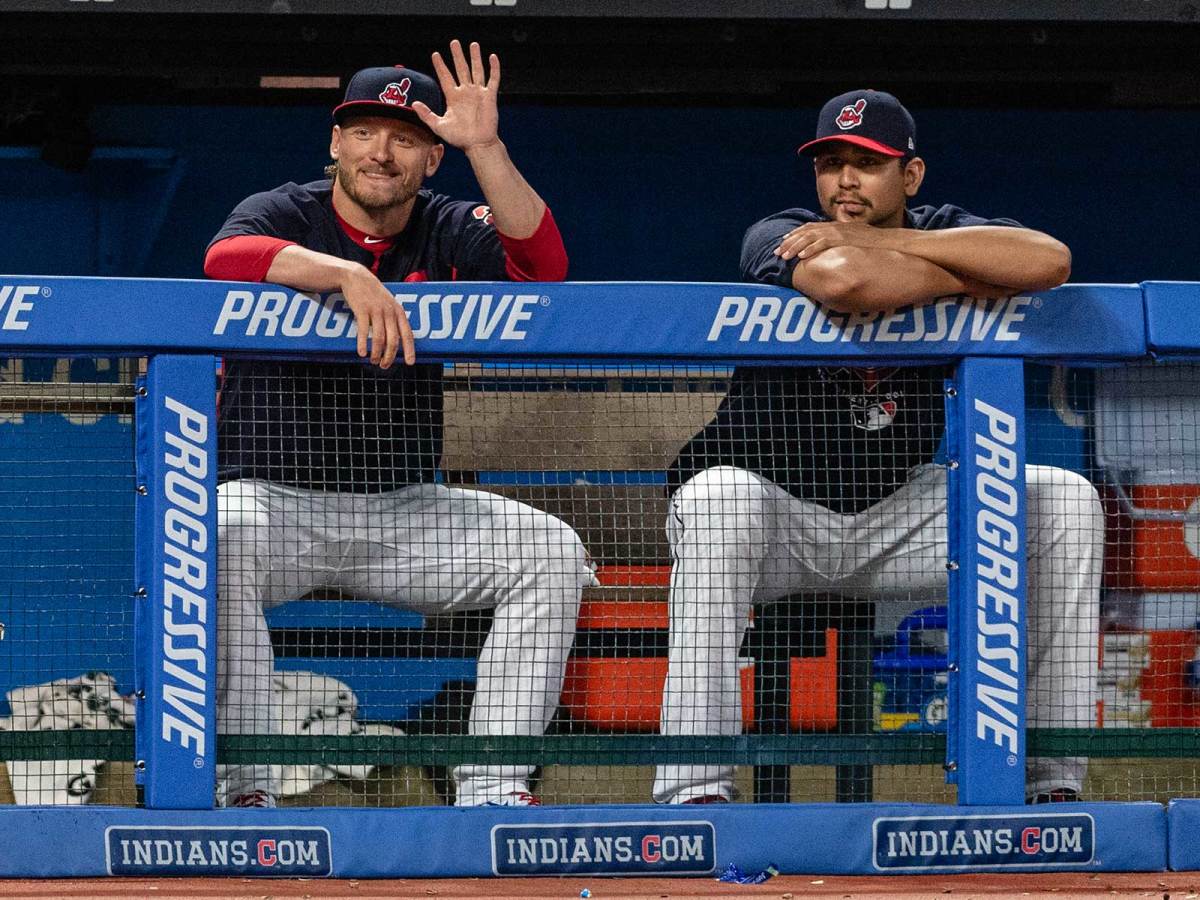
By Tom Verducci
The Josh Donaldson trade is a smart risk for the Indians—smart because they just might have acquired this year’s Justin Verlander, as a waiver deadline pickup who impacts the postseason, but also risky because Donaldson has played only 11 games of Class A baseball since May, has a balky calf and a suspicious throwing problem nobody knows yet is totally gone. The entire gambit depends on whether he can get himself in major league playing shape in a month. If he does, you know he’s going to hit and deepen a dangerous Cleveland lineup. If he doesn’t, he might contribute nothing.
Here’s what the trade means:
1. Donaldson will go on a 10-day DL rehabilitation assignment in the minors. It could be longer. The Indians will not bring him back until he proves he’s an everyday third baseman.
2. Donaldson will not get at-bats as a DH, Francona said. That job belongs to Edwin Encarnacion.
3. Jose Ramírez will move from third to second. He told manager Terry Francona he was not comfortable switching back and forth. He has begun taking grounders at second, and will move when and if Donaldson shows he’s ready. The Indians believe he’s a better second baseman than third baseman, and their defense will be even better.
4. Jason Kipnis, hot of late in what’s been a down year, will lose playing time. He told Francona he was not comfortable playing rightfield. Francona told him he will play centerfield only if he’s the team’s best option there—which doesn’t seem likely because Greg Allen’s defense in center is needed with Michael Brantley and Melky Cabrera on the corners.
5. In one month the Indians just might be the most dangerous team in the AL, at least if Chris Sale doesn’t come back fully healthy for Boston. The Indians have the luxuries of a horribly weak division and an easy path to the postseason to use September like March. It’s glorified spring training—time to get players in shape.
Their most important tasks are to get Donaldson, starting pitcher Trevor Bauer and relief ace Andrew Miller healthy. Bauer is recovering from a stress fracture in his leg and actually has kept his arm strong by throwing occasional bullpens. Miller developed a sore shoulder while compensating for an ailing knee, but the Indians are encouraged by how the shoulder has responded to an anti-inflammatory shot.
When healthy, Donaldson is one of the best hitters in baseball. When healthy, Bauer is another Cy Young candidate. When healthy, Miller is one of the best relief pitchers in baseball. A championship might be riding on their health when October begins.
EDWIN DÍAZ IS MAKING A RUN AT HISTORY, BUT DOES IT MATTER IN 2018?
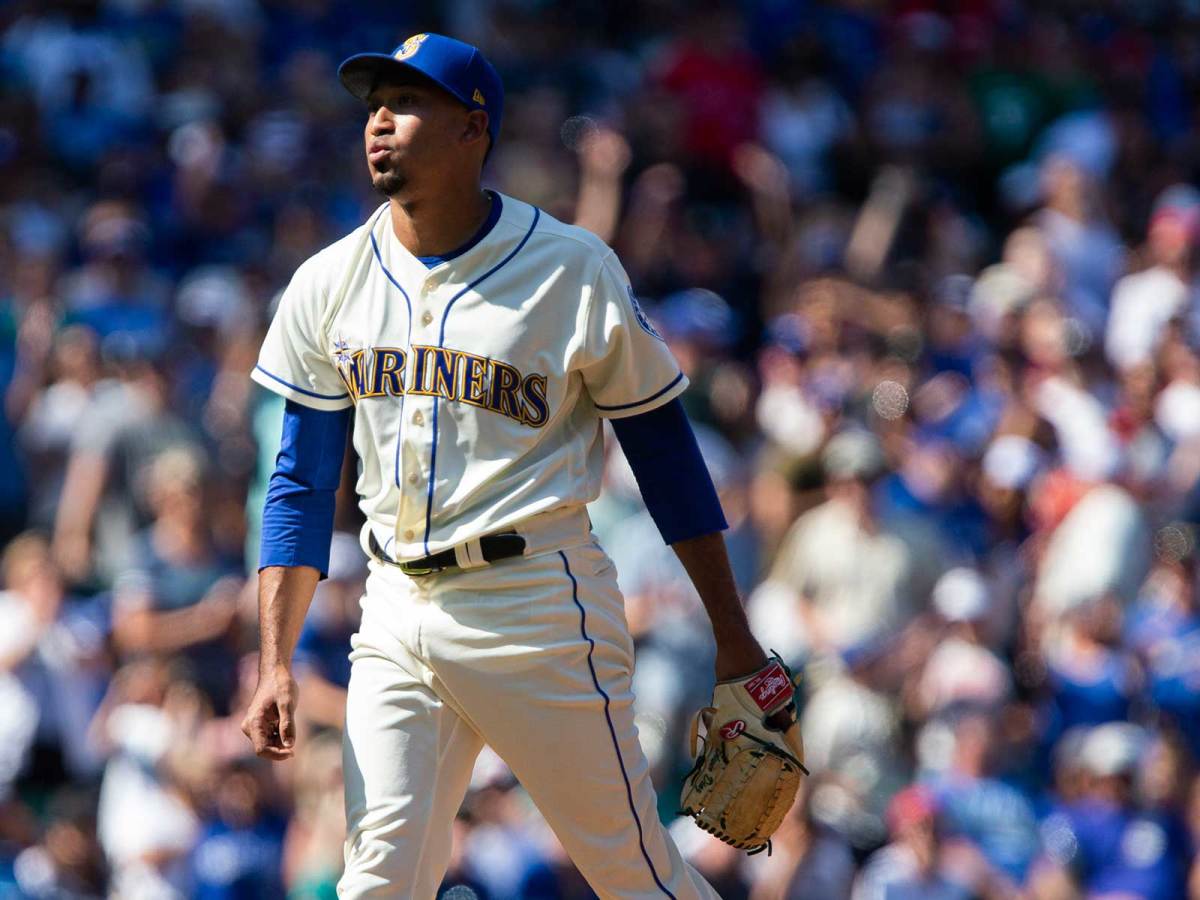
By Jon Tayler
A dozen saves stand between Edwin Díaz and the record books. With one month to go in the season, the Mariners’ closer leads MLB with 52 saves on the year—the most since Jeurys Familia picked up 51 for the Mets in 2016. He’s just the 17th player in major league history to get 50 or more in a season. But 12 more will put Díaz into truly rare territory: the all-time single-season record.
For the last 10 years, that honor has belonged to Francisco Rodríguez, who demolished Bobby Thigpen’s record of 57 set in 1990 by recording 62 saves in 2008 for the Angels. K-Rod is also the only closer in baseball history to reach the 60-save plateau in the 49 years the save has been an official statistic. Yet if you asked the average fan which player holds that record, most of them would likely draw a blank. The top guesses would probably be Mariano Rivera—the all-time career leader—or Hall of Famers like Trevor Hoffman or Dennis Eckersley. Aside from Mariners fans, meanwhile, it’s hard to imagine a casual baseball fan being able to name Díaz as the league’s current leader. His chase of history has gone on to little fanfare.
Part of that is Díaz’s geographic obscurity, locked away as he is in the Pacific Northwest and its attendant time zone. Add in the Mariners’ lack of national exposure or success going into this season, and you have all the ingredients for a year of dominance that, like a tree falling in a forest with no one around, hasn’t made a sound.
Yankees Bolster Their Outfield Depth by Acquiring Andrew McCutchen From Giants
That’s a shame, because Díaz is far more than the 52 saves to his name. He's fanned 46% of all the hitters he’s faced, second only to Milwaukee’s Josh Hader among relievers in that mark. He’s struck out 112 batters in 65 1/3 innings—more punchouts than 35 different starters with 100 or more innings thrown this year. His fastball sits at 98 mph, with batters hitting just .198 against it, and that’s miles better than what they’re doing against his slider: a .108 batting average and a swing-and-miss rate of 28.9%. Díaz has given up one or more runs in just 10 of his 66 appearances, and he’s blown only four saves on the year (the Mariners have won all four of those games). He’s as close to untouchable as it gets.
That level of excellence paired with 50-plus saves could put Díaz in the Cy Young conversation. When Thigpen set the single-season record for the White Sox, he finished fourth in that year’s AL Cy voting, albeit well out of first. Rodriguez was third in the 2008 results, though like Thigpen, he came nowhere close to winning. And Eric Gagne took home the trophy in 2003 when he led the majors with 55 saves, though he also had a 1.20 ERA and a jaw-dropping 137 strikeouts in 82 1/3 innings.
Díaz, though, will have a hard time getting past Chris Sale, Corey Kluber, Justin Verlander, and the other aces who’ve put up superlative seasons of their own. Likewise, breaking K-Rod’s record may prove a hill too high to climb. Seattle has just 25 games left on the season and has been stuck in neutral since the All-Star break, going 18–22. What’s more, Díaz has pitched only once since Aug. 25, closing out an 8–7 win on Saturday but not appearing in a crucial four-game set against the A’s otherwise.
That’s been the case all year with Díaz, who rarely pitches outside of the ninth. He’s appeared before that inning only three times, all in the eighth and all save situations, and in extras just seven times. Those three eighth-inning appearances are also his only outings this year in which he’s entered with runners on base; 48 of his 52 saves have come in clean innings. Díaz is one of the best weapons in baseball, and yet manager Scott Servais refuses to utilize him in tougher, tighter situations.
Roberto Osuna Breaks Silence On Domestic Violence Charge: 'Everybody is Quick to Judge Me'
Like the win, the save has lost its luster in a more stat-savvy age. It’s a function of opportunity, and one that’s been watered down since its introduction, with today’s closer tasked with far less work than the multi-inning firemen of long ago. It’s also a stat that doesn’t necessarily reflect quality. Jim Johnson has as many 50-save seasons as Mariano Rivera, yet next year, the latter will be making a Hall of Fame induction speech in Cooperstown that the former will have to watch on TV. But even though the last decade has proven a revolution of bullpen management, the closer and the save remain stubborn holdovers from a bygone era. Díaz reflects that: Thirteen of his 52 saves have come in three-run games, and when jams arise before the ninth, he’s nowhere to be found.
That’s not a knock on Díaz, but on his usage, and probably helps explain why his quest for the single-season record isn’t getting live look-ins on MLB Network. For many good reasons, the save isn’t worth what it once was. Should Díaz get to 63, he’ll be celebrated, and deservedly so, for a spectacular season. But don’t be surprised if it’s a quiet party for a stat that’s losing its relevance.
ROUNDTABLE: HOW SHOULD MLB PROCEED WITH SEPTEMBER ROSTER EXPANSION?
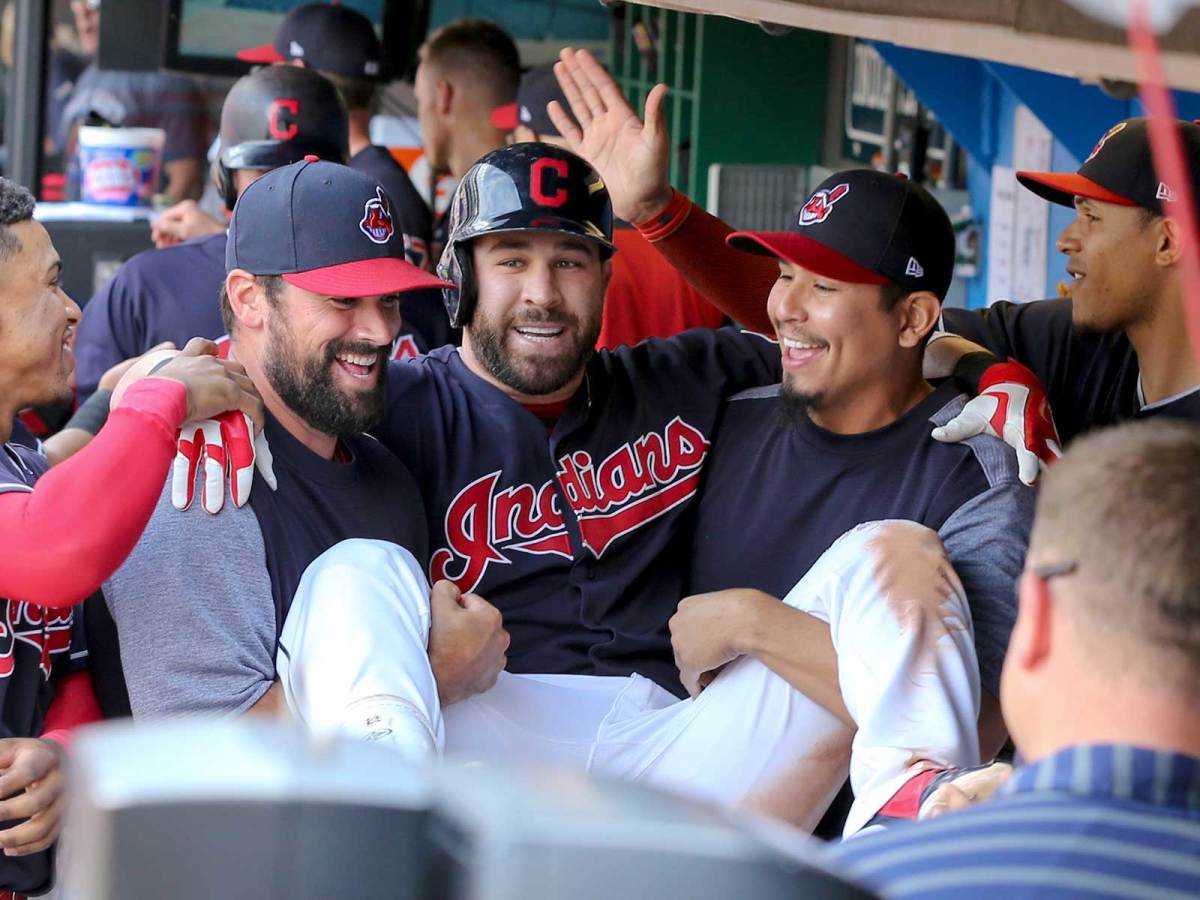
Emma Baccellieri: I’m not terribly concerned with roster expansion as a competitive question. Sure, there isn’t another sport where a 25-man squad can face off against a 35-man opponent, and that’s not ideal, but… it’s not something that strikes me as an undue injustice, given that every team theoretically has the same opportunity in making those choices. Instead, I’m more frustrated by this as an aesthetic problem. Mike Scioscia was only being smart when he made 11 pitching changes in that one game last September, but man, 11 pitching changes in one game. The best remedy to this, in my view, is the idea of setting an active roster before each contest. The season is a grind, and there’s real validity to opening up the team in September. Creating a 25-man active group to be refreshed each day, while everyone on the roster can still get credit for their service time, would ease some of the current system’s more irritating factors without taking away meaningful opportunity for players.
Gabriel Baumgaertner: I think that limiting pitching changes before September is already crucial to speeding the game up. That means that MLB should experiment with it so, for instance, the Dodgers aren't making three pitching changes in the sixth inning like they did against the Mets on Monday. There are myraid answers, several of which are addressed in these responses, but MLB likes incremental change and this is one.
Connor Grossman: From a fan's perspective, I'm not sure there's a compelling reason to have roster expansion in September. It helps refresh the team, sure, but certainly at the expense of fan entertainment. Erasing roster expansion wouldn't be incredibly detrimental to the game, and perhaps extending the waiver trade deadline would be a fair corresponding move. Teams would still have some roster flexibility—but not the ridiculous amount of leeway they're granted now. It doesn't feel cruel or unusual to ask teams to play by the same rules for the entirety of the season.
Marlins Will Encourage 'Musical Instruments, Flags' in Outfield Section Next Year
Jon Tayler: I have no problem with rosters expanding in September; I encourage it, if only so minor leaguers can come up and get both MLB service time and far bigger paychecks. But too many managers—*cough* Joe Maddon and Mike Scioscia *cough*—turn September games into carousels of relievers, as they exploit bigger bullpens and drag games out endlessly. It also doesn’t make sense that rosters stay one static size for five months but randomly bloat at the end of the year. The easy solution: Adopt the NHL’s rule of healthy scratches. A manager has to declare a 25-man roster ahead of the game, with extra players dressing but not allowed to play. That feels more in the spirit of what September roster expansion should be anyway.
Tom Verducci: The solution to baseball’s embarrassing September problem is simple:
1. Call up as many players on the 40-man roster as you wish.
2. Before each series, designate an active 25-man roster. You can’t go game-by-game, which promotes too many shenanigans and doesn’t allow opponents to prepare properly for a series. You should not go to a 28-man roster because there is no reason to play September games under different rules than those played in the first five months. The scourge of relief pitching is dragging down baseball; we don’t need more roster spots going to more relievers.
3. All those called up accrue service time—just as they do now—even if they are not designated on the active 25-man roster for a series.
4. All those called up, even if not on the active series roster, are allowed in uniform and in pregame work, bullpens and dugouts to benefit from the major league “experience.”
5. As throughout the regular season, changes to the 25-man roster during a series are allowable due to documented injury, family emergency, etc.
September baseball grows more boring, longer and inequitable as teams call up more 40-man players than in the past and as pitching changes grow more numerous. On Saturday, in just another September slogfest, Oakland and Seattle used 15 pitchers in a nine-inning game—the A’s used a franchise-record nine pitchers. There were 23 strikeouts and eight walks. Oakland sent 44 batters to the plate; only 16 of them actually put the ball in play.
This latest episode of Relievers on Parade took three hours, 33 minutes, which means if you’re an A’s fan you saw your team put the ball in play once every 13 minutes!
The travesty of September baseball has been an issue people have talked about inside and outside the game for two decades. It grew tiresome long ago. Yet nothing is done about it. Baseball—owners and players—has been grossly negligent to allow its product to erode at such a critical time of the season, the sporting calendar and the game’s appeal.
BEST THING I SAW THIS WEEK: KIKÉ HERNANDEZ'S ROBBERY OF DAVID PERALTA
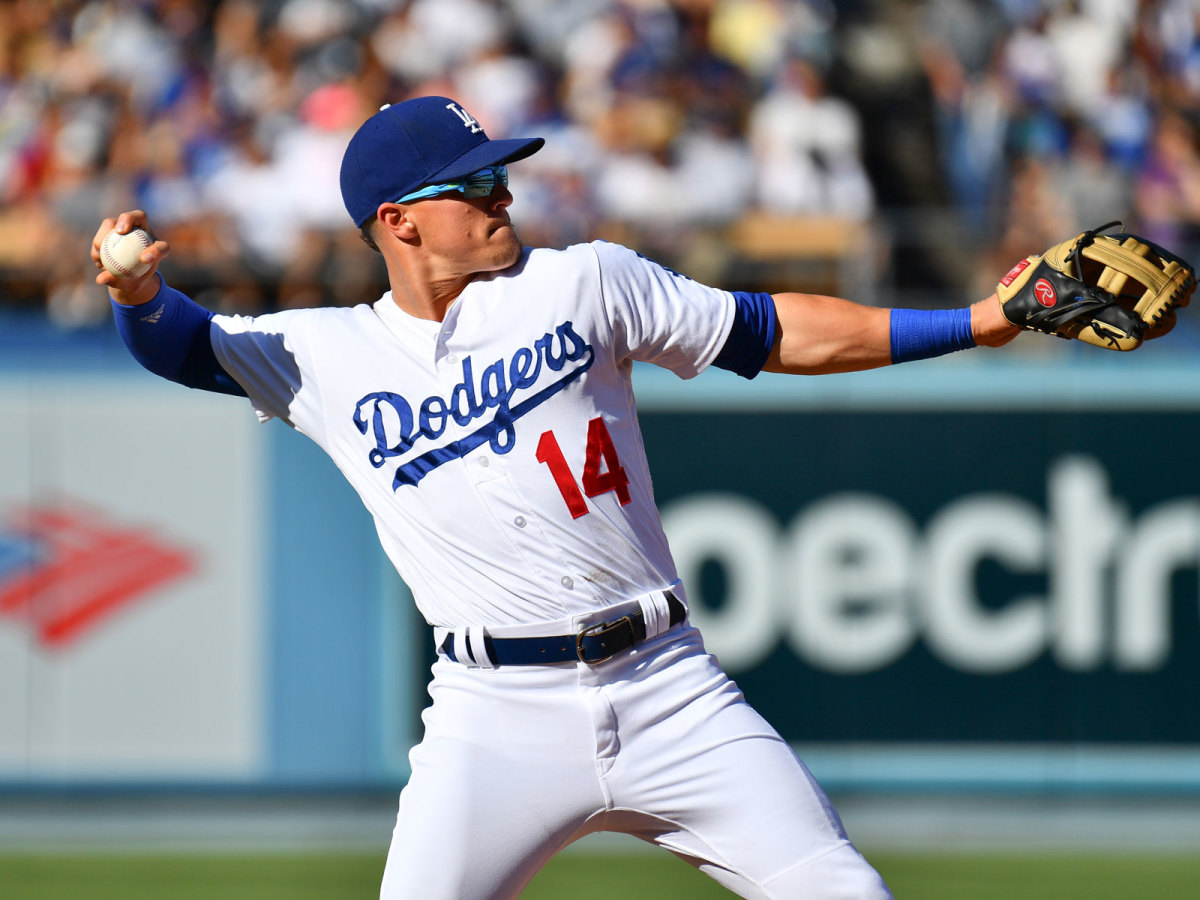
By Gabriel Baumgaertner
Previously considered a team that couldn't hit in the clutch, the Dodgers inverted the NL West with three consecutive late-inning wins over the Diamondbacks this weekend. It started with a go-ahead eighth-inning homer from Justin Turner on Friday followed by a go-ahead three-run homer by Matt Kemp in the eighth inning on Saturday and concluded with a walk-off double from Kemp on Sunday.
Lost in the offensive heroics was one of the finest defensive plays of the year, the type of play that can push a team on the playoff bubble toward some of its best baseball of the season. Kiké Hernandez was playing his first inning at second base after spending the game in centerfield, one of a handful of positional changes the Dodgers made before the beginning of the ninth inning. Diamondbacks leftfielder David Peralta, hitting .333/.381/.676 with 10 homers since August 2, stepped up to lead off a ninth inning with Arizona trailing 3–2 and Paul Goldschmidt waiting behind him. Peralta hit what appeared to be a sure base hit through the right side before Hernandez smothered the ball with a dive. The dive is an impressive, but not unprecedented physical feat. What makes Hernandez's play one of the best of the year is the throw: Hernandez somehow balances himself on one leg and rolling on his foot while sliding before mustering the arm strength to whip the ball from shallow rightfield to first base. Now consider that if Peralta gets on base, closer Kenley Jansen has to face Goldschmidt, hitting .329 with 10 homers of his own since the All-Star Break, as the go-ahead run.
From positioning to physical excellence to situational importance, it's an absolutely perfect piece of defense.
YOUR NL WINS ABOVE REPLACEMENT LEADER IS ... LORENZO CAIN?
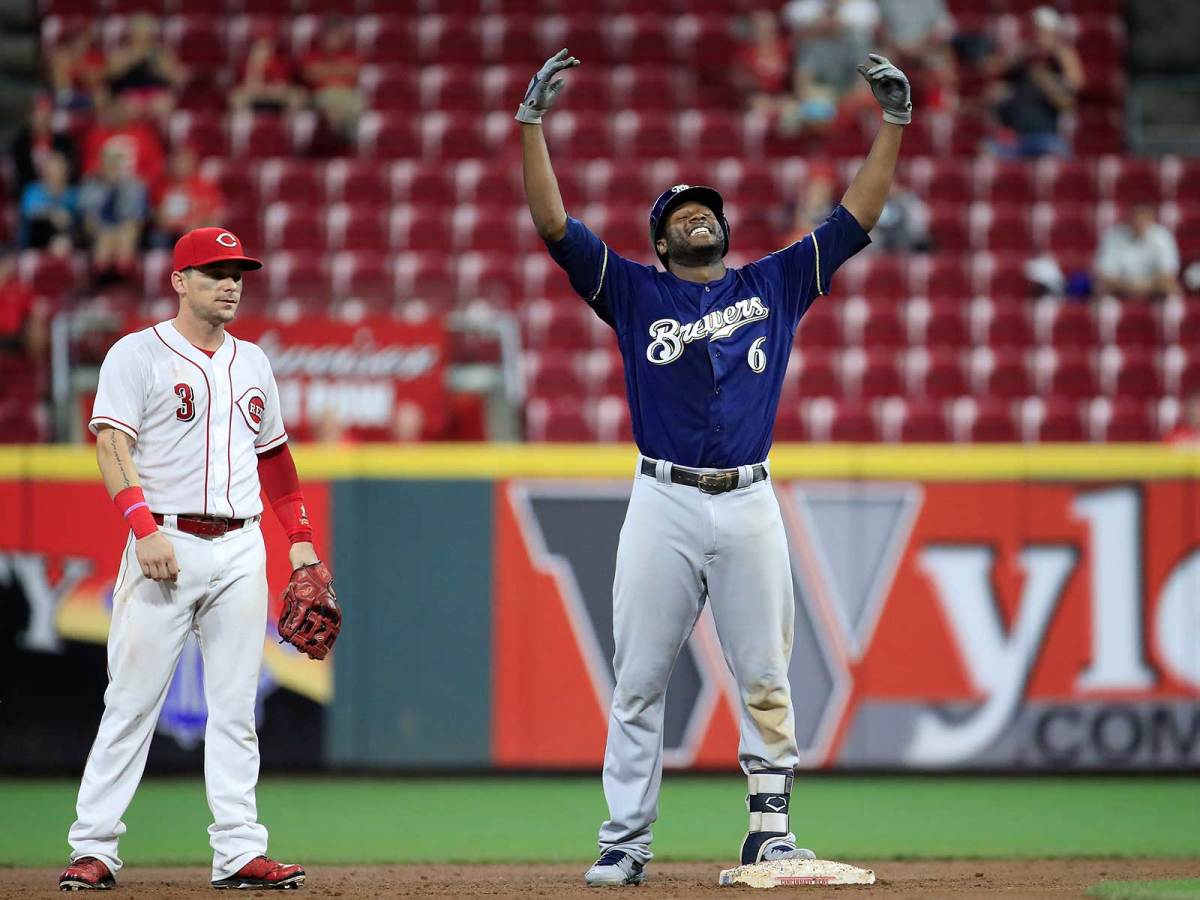
By Emma Baccellieri
“It’s about how you see, not what you see,” once said a biographer of Hermann Rorschach, the psychiatrist who designed the famous inkblot test. The same could be said of WAR. The different calculations value different skills, and the content of those differences can be more illuminating than the resulting final numbers. For a perfect example, look no further than the question of the best position player in this year’s National League. Both FanGraphs and Baseball Prospectus point to Matt Carpenter, whose second-half explosion of offense has been impossible to ignore. But Baseball-Reference lists another player: Lorenzo Cain, with 5.9 WAR to Carpenter’s 5.4.
Cain has taken a crucial step forward with his performance at the plate this year, but he still does not rank among the ten best hitters in the NL. (His 123 OPS+ is just a few points shy of the personal best that he set three seasons ago, when he finished third in voting for AL MVP.) His WAR’s high value, then, gets much of its thrust from his defense. That’s perhaps not so surprising. Cain’s at a premium position in center field, and his speed has long made him a talented defender, after all. But take another minute here—go back over the fact that his speed has long made him valuable—and start to wonder. Cain is 32. Most players can be expected to start losing their agility at this point; for a guy whose defense is built on his speed, that can spell disaster. Even if he isn’t projected to decline, such a player certainly isn’t expected to get better. But Cain’s numbers say that he has. So what gives?
Jacob deGrom, Max Scherzer or Aaron Nola? The NL Cy Young Race Is an Absolute Doozy
Here’s the place to note that no defensive metric is complete, and each one is flawed in its own way. Cain’s defense isn’t fully captured here, but these numbers might, at least, point toward the source of his improvements. Baseball-Reference and FanGraphs use two different metrics to calculate defensive runs above replacement—defensive runs saved and ultimate zone rating, respectively—and while there are a couple of key differences between the two, perhaps the biggest one is that the former uses a one-year data sample and the latter takes a multi-year approach. There’s plenty to debate about the merits of each style, and plenty of it has been debated. For our purposes here, though: Baseball-Reference makes it easier for a player’s defensive value to go through a big change in a single season. B-R believes Cain has made such a change this year, and that’s reflected in his top ranking here. FanGraphs, meanwhile, still casts a cautious eye toward his defense from the past several years, and that’s one of the reasons he doesn’t take their top WAR ranking.
What big change in his defense is seen by Baseball-Reference? Cain’s arm. Last year, his arm actually rated as a negative in terms of runs allowed by baserunners advancing on him. (-4 runs, to be exact.) This year, his arm has been worth six runs saved. Does that mean that Cain has actually boosted his strength that significantly in one year? Probably not, though it’s not impossible. But it does likely mean that he’s in a situation now where he can better maximize his strengths and hide his weaknesses. There are any number of reasons for that. Cain’s on a new team; he’s flanked by different guys; he’s been positioned slightly differently. By Statcast’s reckoning, his trademark speed has decreased just a hair this year, but defensive numbers say that he’s more than made up for it with the rest of his game. To go back to Rorschach: Outfield zone charts may not look too different from ink blots, but whatever they hold, Milwaukee reads Cain’s as a success.
WHAT'S ON TAP: ANOTHER POTENTIAL ALCS PREVIEW IN BOSTON
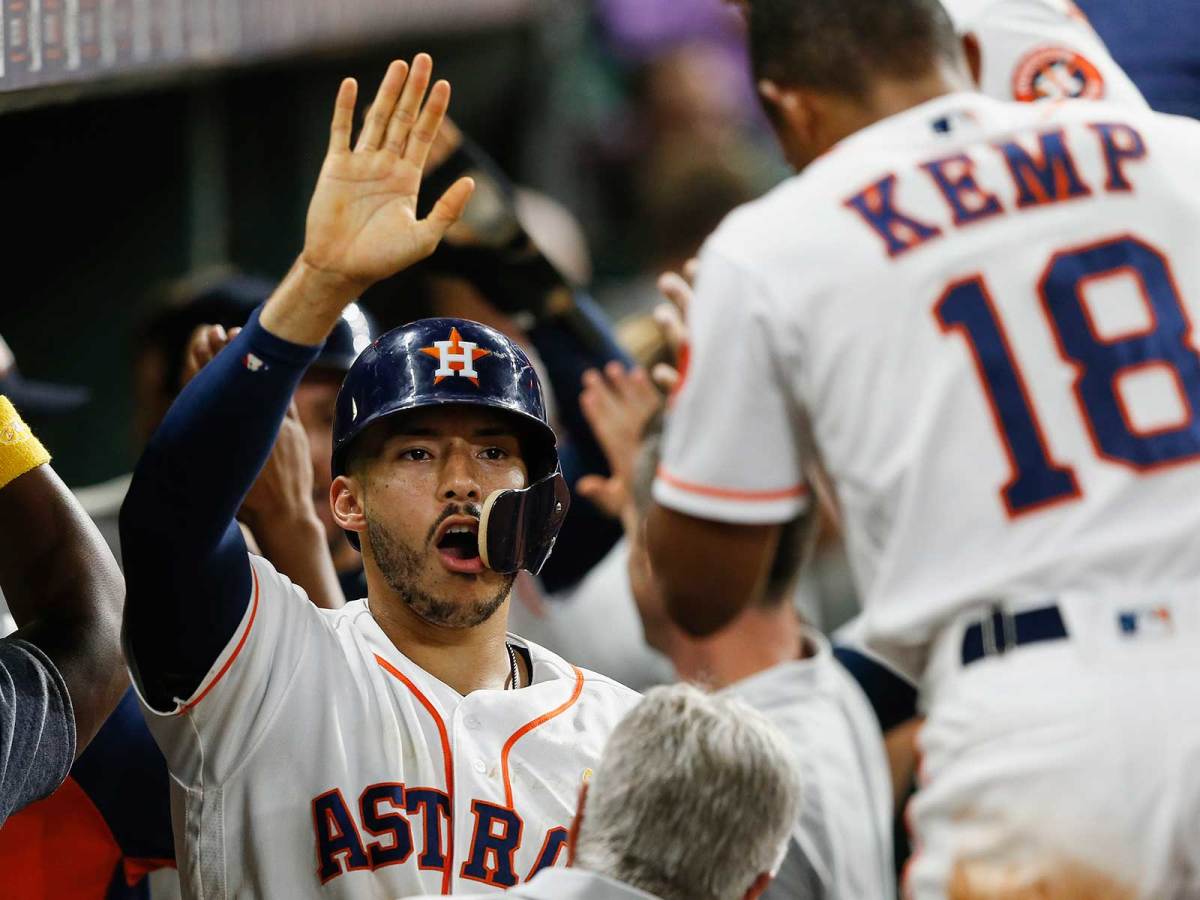
By Michael Beller
Hitter to Watch: Christian Yelich, Brewers
Yelich put an exclamation point on the Brewers' weekend series in Washington on Sunday, belting a grand slam that put the series finale and rubber match out of reach. He has been the hottest hitter in the league the last two weeks, going 24-for-66 with nine homers and 21 RBI in his last 15 games. Yelich is now hitting .316/.381/.559 with 27 jacks and 81 RBI on the season, and is firmly in the NL MVP race.
Pitcher to Watch: Blake Snell, Rays
Snell was excellent again in his last trip to the mound, allowing two runs—one earned—on eight hits in 6 2/3 innings against the Indians. He struck out nine and walked just one, winning his 17th game of the season. Take out a July 12 start that Snell left early with a shoulder issue that sent him to the DL, and he hasn’t allowed more than one earned run in a start since June 14. The 25-year-old has broken out in a big way this year, pitching to a 2.02 ERA and 1.01 WHIP with 177 strikeouts in 151 2/3 innings, to go along with the gaudy 17-5 record. He’s scheduled to make one start this week, facing the Orioles over the weekend.
Series to Watch: Astros at Red Sox, Friday through Sunday
There’s no shortage of great series with playoff implications this week, but it’s hard to ignore what could very well be a preview of the ALCS. The Red Sox are actually in one of their worst stretches of the season, going 4-5 in their last nine games. Of course, that’s not exactly a terrible stretch, and reflects just how dominant they’ve been all season. At 95-44, they still comfortably have the best record in the majors, and are almost certain to win the AL East. The Astros are 10-2 in their last 12 games, and sit 2 1/2 games ahead of the A’s in the AL West. They’re slated to throw Gerrit Cole, Charlie Morton and Dallas Keuchel in the weekend series, while the Red Sox will counter with Eduardo Rodriguez, Chris Sale and David Price.
TWEETS OF THE WEEK
Just gonna take me a sec to get used to my freshly shaved face😂. Other than that...let’s go!
— Andrew McCutchen (@TheCUTCH22) August 31, 2018
To protest the Yankees making Andrew McCutchen shave his facial hair, I have photoshopped facial hair onto Yankees greats. pic.twitter.com/dfSRgbRPDE
— Grant Brisbee (@GrantBrisbee) September 1, 2018
Not only is it fun, it’s true! pic.twitter.com/hbdO5R3lpk
— San Diego Padres (@Padres) August 31, 2018
— out of context baseball (@baseballcontext) September 1, 2018
It's been years since @DaveSheinin first mentioned this story. I always wanted to read it. It's as good as -- and even better than -- I hoped.
— Adam Kilgore (@AdamKilgoreWP) August 30, 2018
A 30-year-old journeyman pitcher thought he made the big leagues. Then it rained. https://t.co/G13sqWCzJL
FROM THE VAULT: CAL RIPKEN COMPLETES HIS TREK TOWARD HISTORY
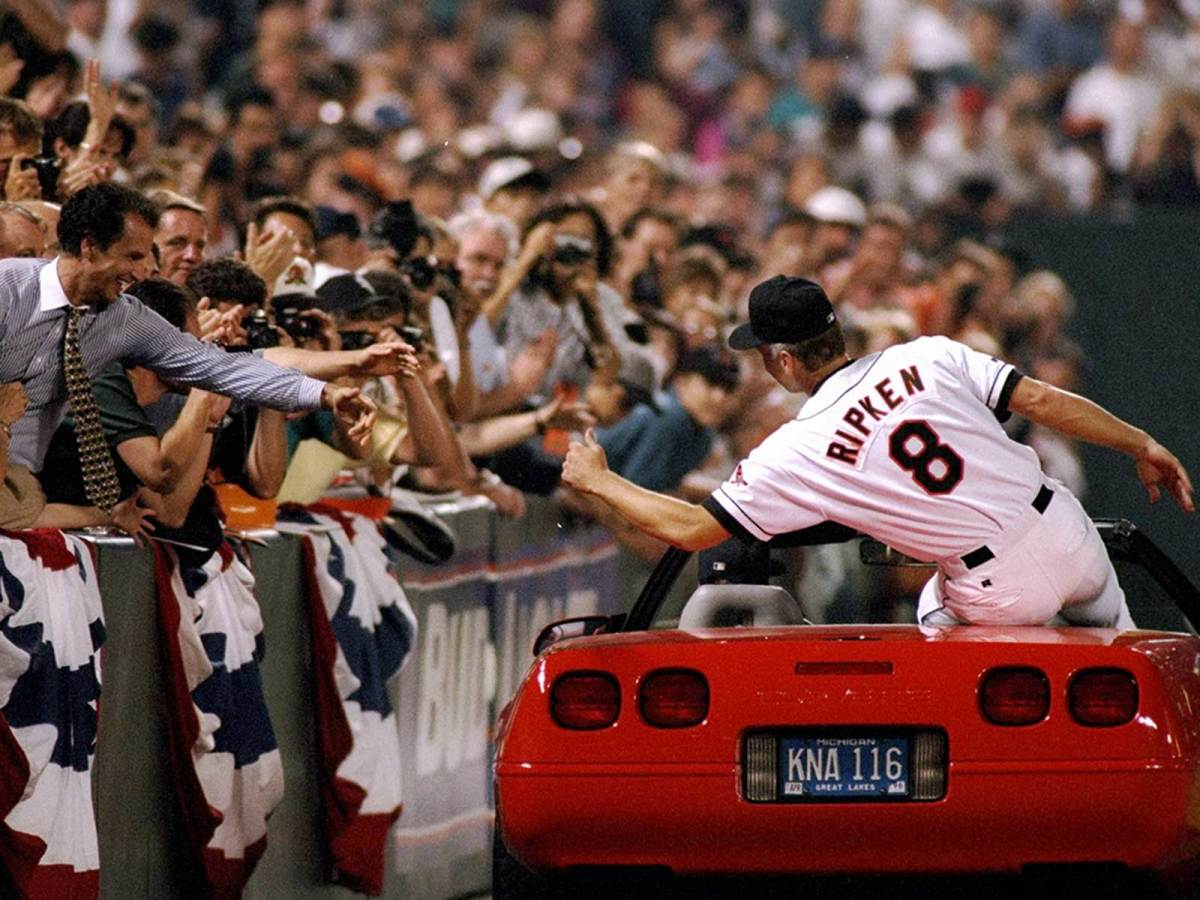
By Connor Grossman
We featured Cal Ripken Jr. in this space a few weeks back, revisiting this Tim Kurkjian piece on Ripken's personal life, and now we're doubling down on the Iron Man. This week (Thursday, Sept. 6) marks the 23rd anniversary of Ripken passing Lou Gehrig for the most consecutive games played. Kurkjian was on the assignment again for SI, chronicling one of the most memorable milestone celebrations in baseball history as Ripken played in his 2,131st straight game. Gehrig only played in 2,130 straight. Let's not forget Ripken still played the next 501 consecutive contests to set the new record at 2,632.
Enjoy the excerpt below or find Kurkjian's entire piece here.
When Ripken undressed at his locker three hours after the game, two attendants stood by tagging and bagging every piece of clothing he peeled off, preparing them for delivery to trophy cases at the Baseball Hall of Fame and elsewhere. "I'm keeping this," Cal said, flipping his protective cup into his locker. He finally left the clubhouse at 1:48 a.m.
After years of blocking out distractions created by the Streak, Ripken finally began to feel overwhelmed, and he had trouble sleeping and eating in the week leading up to the record-breaking game. He barely slept at all the night before number 2,131. "I was sweating so much the sheets and the comforter were soaking wet," Ripken said. He thought he might have a virus, but he decided it was a case of "nerves."
After he finally dozed off, Ripken awoke at 8:05 and scrambled to take his five-year-old daughter, Rachel, to her first day of kindergarten. Later that day he was able to catch a nap.
